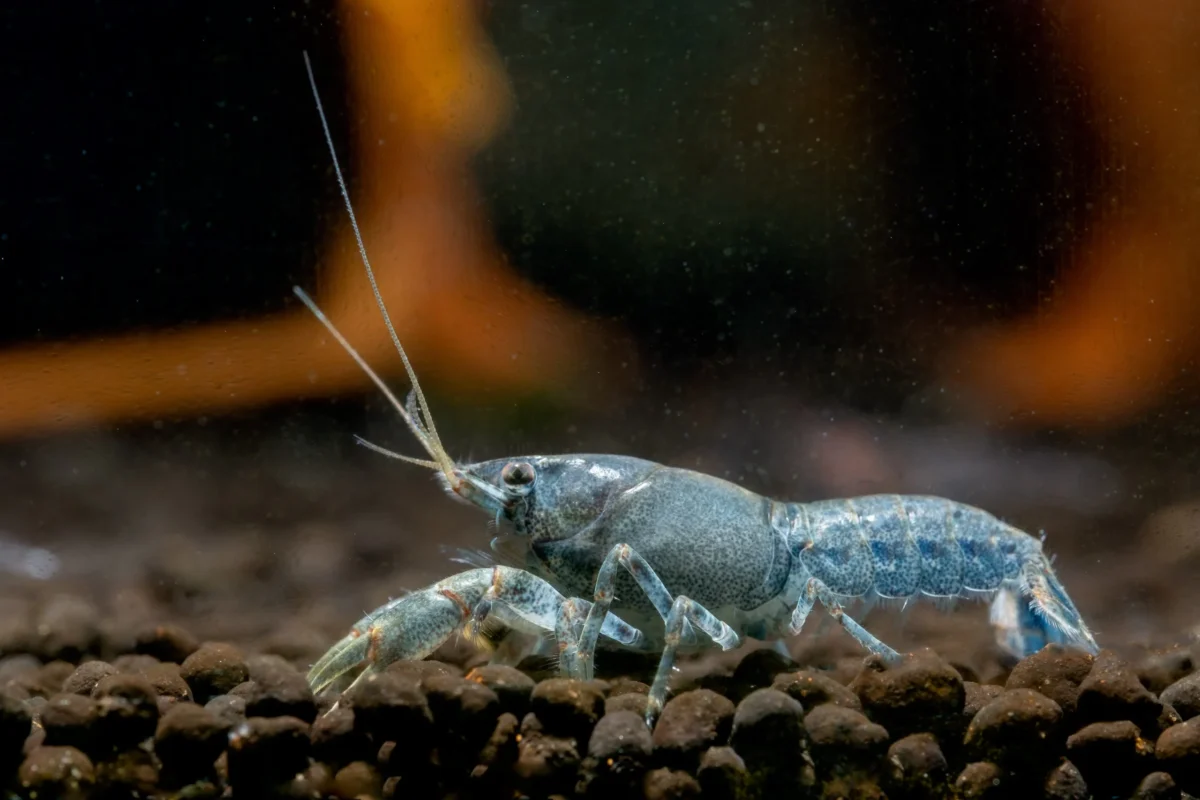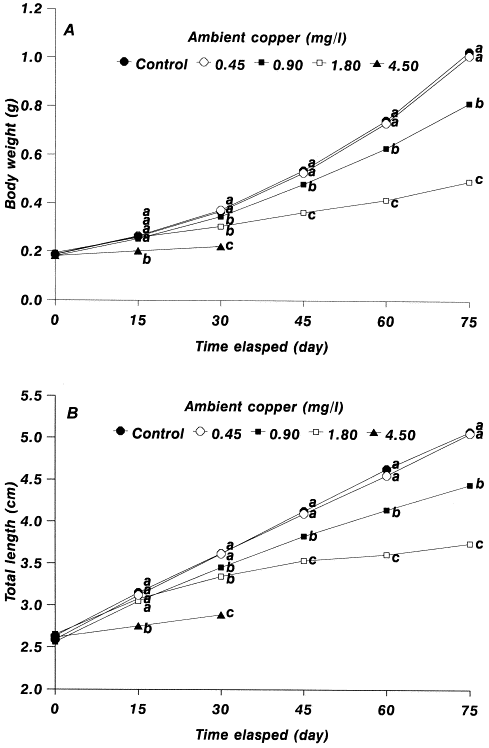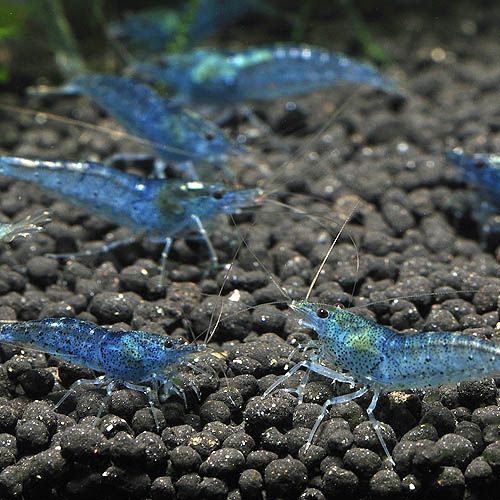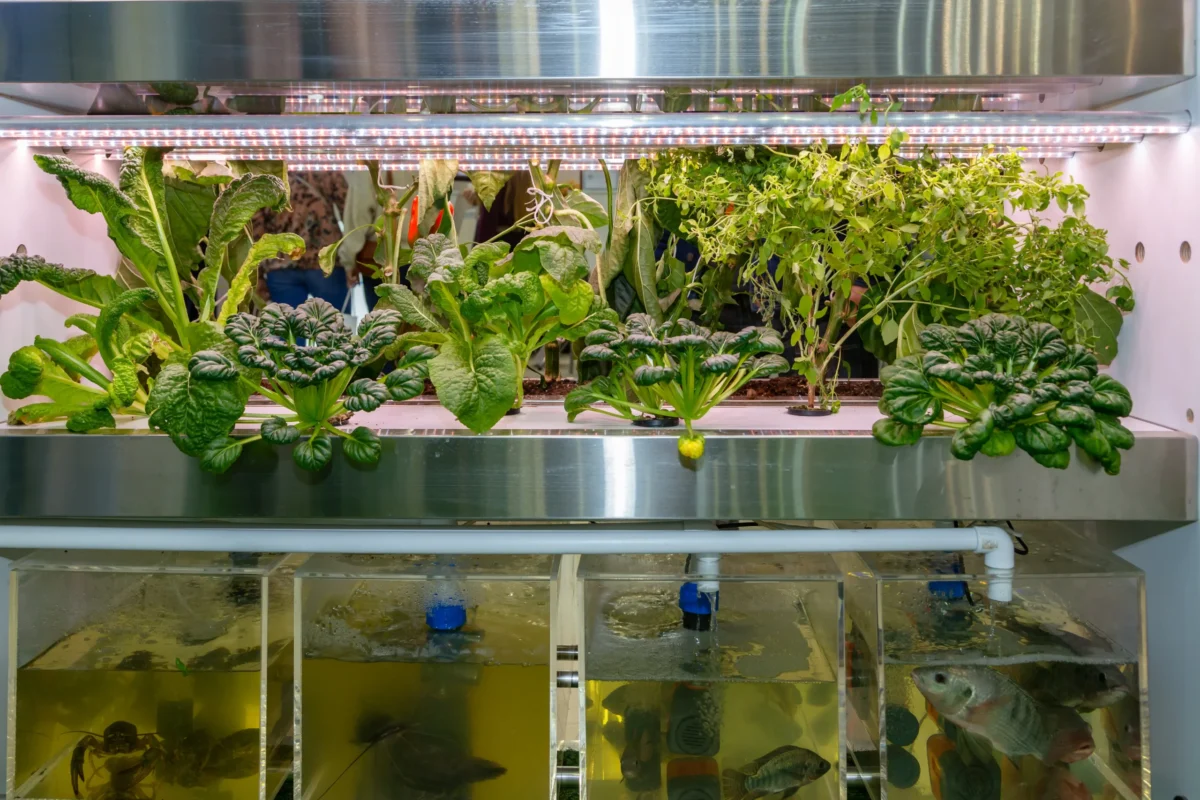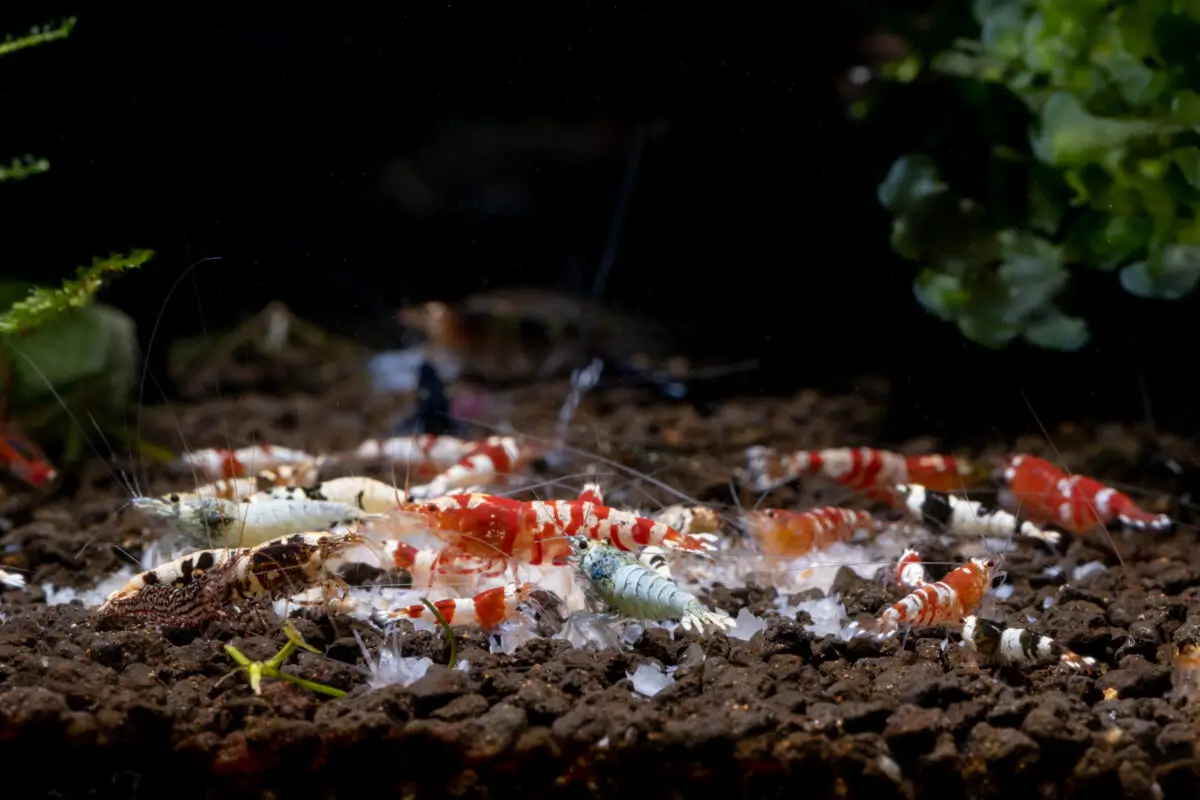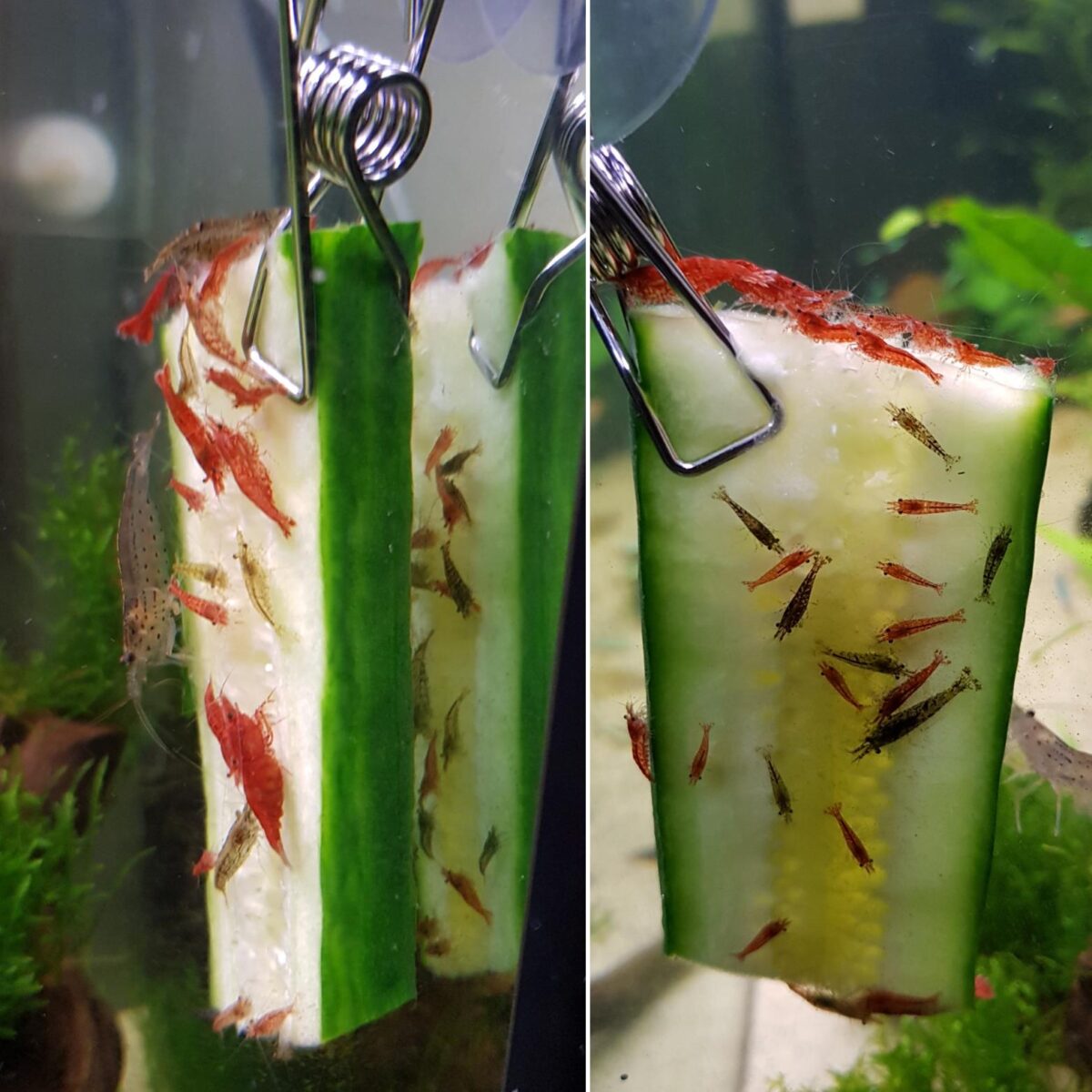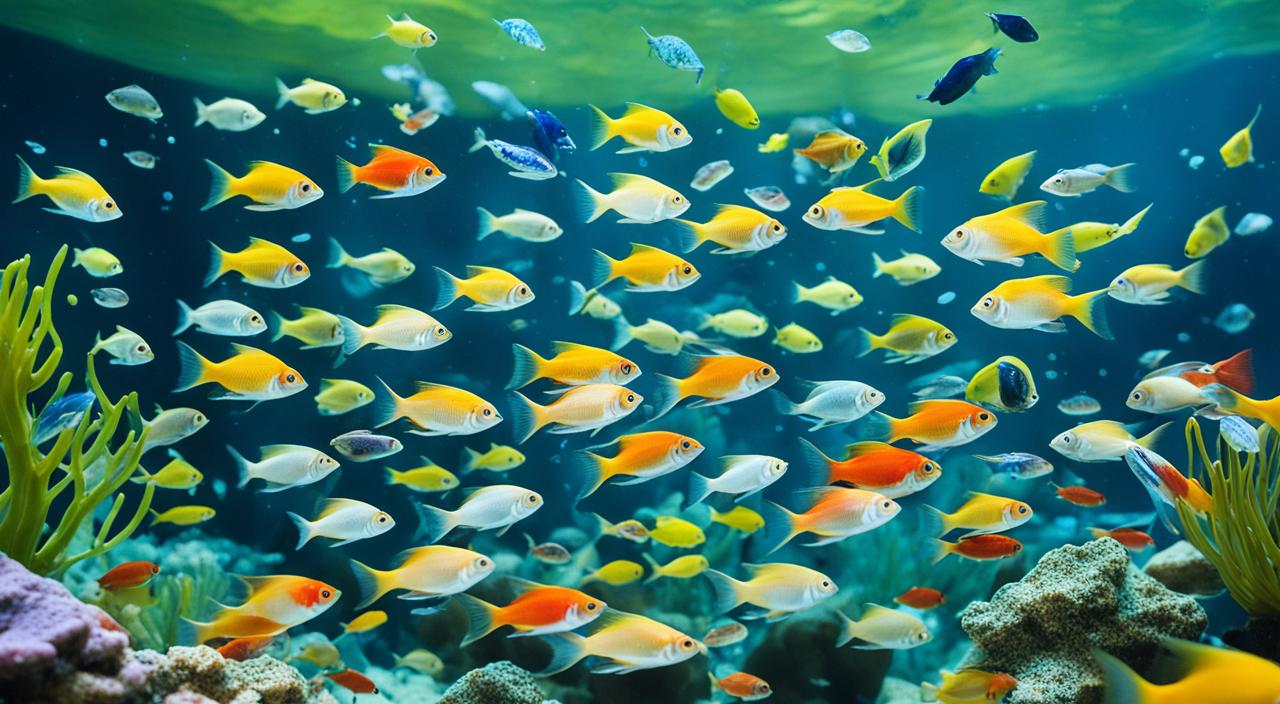The greatest threat to our planet is the belief that someone else will save it.
Robert Swan
Welcome to the world of crustacean care, where we will discuss the Critical Minerals for Shrimp, Snails, and Crayfish. Whether you’re an avid aquarist or a beginner in freshwater aquariums, understanding the importance of mineral supplements and trace elements is crucial for maintaining the health and well-being of your shrimp, snails, and crayfish.
Aquatic health relies heavily on the balance of essential nutrients, and minerals play a vital role in promoting the physiological functions of invertebrates. From facilitating moulting and shell formation to encouraging reproduction, minerals are the building blocks that support the overall well-being of these fascinating aquatic species.
This comprehensive guide will explore the top 10 critical minerals necessary for your crustaceans’ optimal health and growth. From calcium for shrimp moulting to zinc benefits in the crustacean diet, we will delve into the significance of each essential nutrient and its impact on the well-being of your aquatic companions.
So, let’s dive in and discover the world of minerals that will help you create a thriving aquatic ecosystem in your tank!
Key Takeaways:
- Minerals are critical for the health and well-being of shrimp, snails, and crayfish in a freshwater aquarium.
- From calcium to zinc, understanding the role of essential minerals is crucial for promoting crustacean care.
- Moulting, shell formation, reproduction, and overall physiological functions rely on a balanced intake of minerals.
- By integrating the right mineral supplements into your tank’s diet plan, you can ensure your crustaceans’ proper growth and vitality.
- The belief that someone else will save our planet is the greatest threat to its sustainability.
Understanding the Role of Minerals in Aquatic Health, Why its a Critical Minerals for Shrimp
- Understanding the Role of Minerals in Aquatic Health, Why its a Critical Minerals for Shrimp
- 1. Mining the Benefits: Calcium and Magnesium’s Part in Crustacean Care
- 2. Potassium: The Unseen Ally in Aquatic Ecosystems
- 3. Copper Supplementation: A Delicate Balance for Shrimp Health
- 4. Sodium Supplementation: Osmoregulation and nerve function
- 5. Zinc Benefits in the Crustacean Diet
- 6. Essential Trace Elements: Manganese and Boron in Invertebrate Care
- 7. Iron Improvements: Oxygen transport and energy metabolism
- 8. Phosphorus Ignitors: Energy storage and shell structure
- 9. Selenium: Unseen Warrior
- 10. Iodine Supplements: Thyroid function and developmental processes
- The Vital Vitamins: From D to A for Healthy Crustacean Growth
- Carotenoids and Crustaceans: Astaxanthin’s Impact on Color and Health
- Snail Shell Health: The Crucial Role of Calcium Carbonate
- Integrating Essential Minerals into Your Tank’s Diet Plan
- Conclusion
- FAQ
- Source Links
Minerals play a crucial role in aquatic species’ overall health and well-being. As an aquarist, understanding the significance of minerals and their impact on crustacean physiology is essential for ensuring the care and well-being of shrimp, snails, and crayfish in your tank.
Significance of Minerals in Crustacean Physiology
Minerals are essential for various physiological processes in crustaceans. They contribute to the growth and development of exoskeletons, regulate metabolic functions, and support reproductive processes. A balanced mineral intake is critical for maintaining the health and vitality of these fascinating aquatic organisms.
Impact on Molting, Shell Formation, and Reproduction
Minerals are vital in crustaceans’ moulting, shell formation, and reproduction. The old exoskeleton is shed during moulting, and a new one is formed. Calcium, for example, is a crucial mineral required for creating solid and healthy exoskeletons, while magnesium supports the synthesis of calcium carbonate, the primary component of shells. Adequate mineral levels are essential for promoting successful moulting and ensuring proper shell growth.
Mineral Deficiency and Aquatic Species Health Concerns
Insufficient mineral levels can lead to various health concerns in aquatic species. Mineral deficiencies can result in weakened shells, slow growth, and reproductive issues. Aquarists must monitor and maintain optimal tank mineral levels to promote their crustaceans’ overall health and well-being.
By understanding the role of minerals in aquatic health and their significance in crustacean physiology, you can provide the best care possible for your shrimp, snails, and crayfish. The following sections will delve deeper into specific minerals and their benefits for these fascinating aquatic organisms.
1. Mining the Benefits: Calcium and Magnesium’s Part in Crustacean Care
Calcium and magnesium are crucial in maintaining the health and well-being of crustaceans, such as shrimp, snails, and crayfish. These essential minerals are vital for various physiological processes and contribute to the overall vitality of these aquatic organisms.
Here’s a quick clip of a Shrimp Moulting
The Importance of Calcium in Molting and Shell Formation
Calcium is a crucial nutrient that supports the moulting process and helps form strong and healthy shells in crustaceans. Crustaceans shed their old exoskeletons during moulting to allow for growth and development. Calcium is a critical component that provides the necessary building blocks for forming the new exoskeleton. Without sufficient calcium, crustaceans may experience moulting difficulties and develop weak, fragile shells, leading to vulnerability and potential health issues.
Crustaceans rely on their diet and environment to ensure adequate calcium intake. Natural mineral sources, such as calcium-rich foods and mineral-enriched water, are essential for maintaining optimal calcium levels in the aquarium. Additionally, aquarium salt can be a mineral supplement to provide the necessary calcium for crustacean health and wellness.
Magnesium’s Role in Shrimp, Snail, and Crayfish Health
Magnesium is another crucial mineral that plays a vital role in the health of crustaceans. It involves several physiological processes, including enzyme function, muscle contraction, and nerve transmission. Magnesium also contributes to the overall electrolyte balance within the crustacean’s body.
For shrimp, snails, and crayfish, magnesium is essential for maintaining proper metabolic function and supporting overall well-being. It aids in absorbing and utilising other minerals, including calcium, and helps regulate various biological processes. Crustaceans may experience difficulties with growth, reproduction, and optimal health without adequate magnesium.
How Crustaceans Absorb Calcium and Magnesium
Crustaceans absorb calcium and magnesium through their diet and the surrounding water. Calcium absorption is a complex process that involves the active transport of calcium ions across cell membranes in the crustacean’s digestive system.
Similarly, magnesium absorption occurs predominantly in the crustacean’s digestive system, facilitated by specific transport mechanisms. The absorption of magnesium is influenced by factors such as pH levels and other minerals in the surrounding environment.
| Mineral | Function | Natural Sources |
|---|---|---|
| Calcium | Aids in molting and shell formation | Calcium-rich foods, mineral-enriched water, aquarium salt |
| Magnesium | Supports metabolic function and electrolyte balance | Magnesium-rich foods, mineral-enriched water |
2. Potassium: The Unseen Ally in Aquatic Ecosystems
While calcium and magnesium often steal the spotlight when discussing minerals in aquatic environments, potassium quietly plays a crucial role in maintaining the health and balance of aquatic ecosystems. From promoting sodium balance to supporting overall marine health, potassium is essential for various aquatic species, including shrimp, snails, and crayfish.
Potassium, commonly found in natural and artificial sources, is an essential component of a well-rounded diet for crustaceans. It aids in maintaining the proper function of cells and tissues, contributing to overall organism wellness. Additionally, potassium helps regulate water and nutrient movement within the body, promoting efficient nutrient management and ensuring optimal bodily functions.
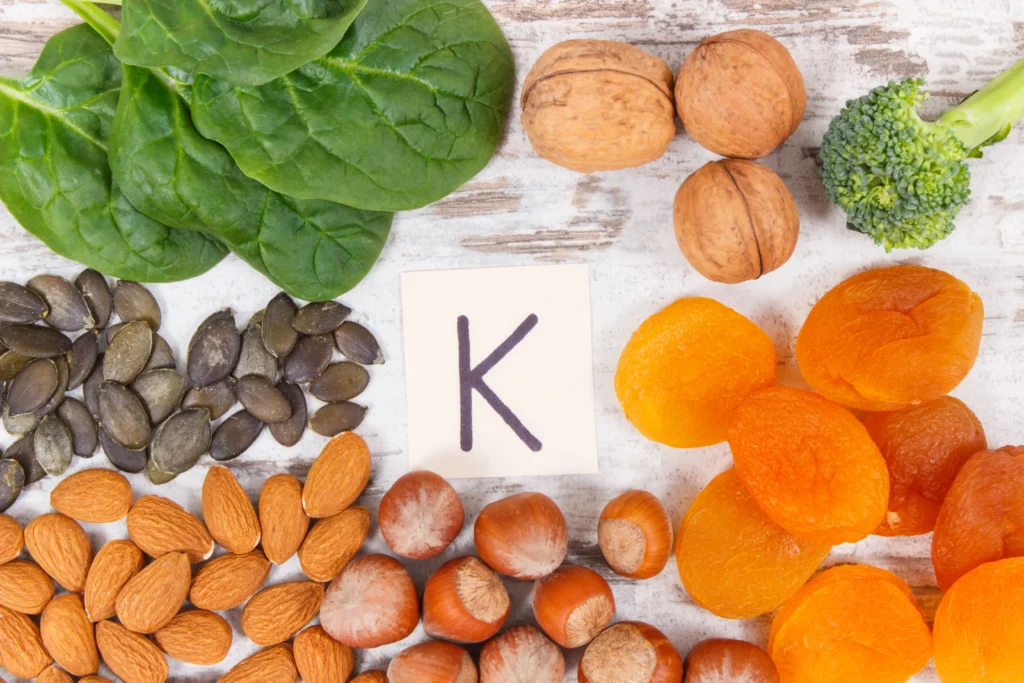
One of the critical benefits of potassium is its interaction with sodium chloride, commonly known as salt. Potassium works alongside sodium to maintain the delicate balance of electrolytes in the bodies of aquatic organisms. This balance is crucial for various physiological processes, such as osmoregulation, nerve function, and muscle contraction, ensuring crustaceans’ overall health and well-being.
Furthermore, potassium plays a vital role in water hardness regulation. Potassium stabilises these parameters as an essential component of water’s general hardness (GH) and carbonate hardness (KH). Proper GH and KH levels are critical for maintaining healthy crustaceans, ensuring proper shell formation, moulting, and overall growth.
Various options exist for sourcing potassium for your aquatic pets. Natural sources include vegetables like spinach, kale, mushrooms and fruits like bananas and oranges. Commercially available crustacean diets and mineral supplements can also provide the required potassium levels for aquatic organisms.
To give you a visual representation, here’s a table showcasing some familiar potassium sources, the corresponding potassium levels, and their uses in maintaining the health of crustaceans:
| Potassium Source | Potassium Level (per 100g) | Uses in Crustacean Care |
|---|---|---|
| Spinach | 558mg | Promotes overall health and vitality |
| Bananas | 358mg | Supports proper muscle function |
| Oysters | 250mg | Aids in shell formation and molting |
| Commercial crustacean diets | Varies (as per product) | Provides a balanced diet, including essential potassium levels |
Integrating potassium-rich foods and supplements into the diet of your crustaceans is vital for their overall well-being. It ensures proper sodium balance, promotes aquatic health and contributes to marine ecosystems’ overall stability and vitality. By recognizing the significance of potassium and maintaining the appropriate nutrient balance, you can provide the best care for your aquatic pets and support their thriving existence.
3. Copper Supplementation: A Delicate Balance for Shrimp Health
The proper balance of critical minerals is needed for shrimp care. Copper plays a significant role in shrimp health. While copper is necessary for various physiological processes, it must be carefully managed to avoid toxicity.
Understanding Copper’s Role in Crustacean Blood
Copper is an essential component of the oxygen-carrying molecule in crustacean blood called hemocyanin. Hemocyanin is responsible for transporting oxygen throughout the shrimp’s body. Adequate copper levels are necessary to ensure efficient oxygen transport and maintain proper respiratory function in crustaceans.
Navigating Toxicity and Necessity of Copper
While copper is essential for crustacean health, striking the right balance is important. Too much copper can be toxic and lead to significant health issues. Copper toxicity can affect the gills, nervous system, and overall growth and development of shrimp, crayfish, and other crustaceans.
On the other hand, copper deficiency can result in decreased immune function, impaired growth, and reproductive issues. Therefore, it’s crucial to provide an adequate amount of copper in the crustacean diet.
In aquaculture, copper supplementation is often necessary to ensure optimal shrimp health. However, following recommended guidelines and monitoring copper levels regularly is essential to prevent potential harmful effects.
Aquarists can support the overall well-being and vitality of their shrimp, crayfish, and other invertebrates by maintaining the delicate balance of copper in the crustacean diet, improving their chances of thriving in the aquarium environment.
4. Sodium Supplementation: Osmoregulation and nerve function
Sodium is an essential mineral in shrimp and crustaceans’ diets, playing a crucial role in several physiological functions critical to their survival and health. It helps regulate osmotic balance, maintaining the proper fluid levels within their bodies and their environment, which is vital for their ability to absorb nutrients and expel wastes. Additionally, sodium is integral to nerve function, enabling the proper transmission of nerve impulses that control muscle contractions and other reflex actions essential for feeding and reacting to the environment.
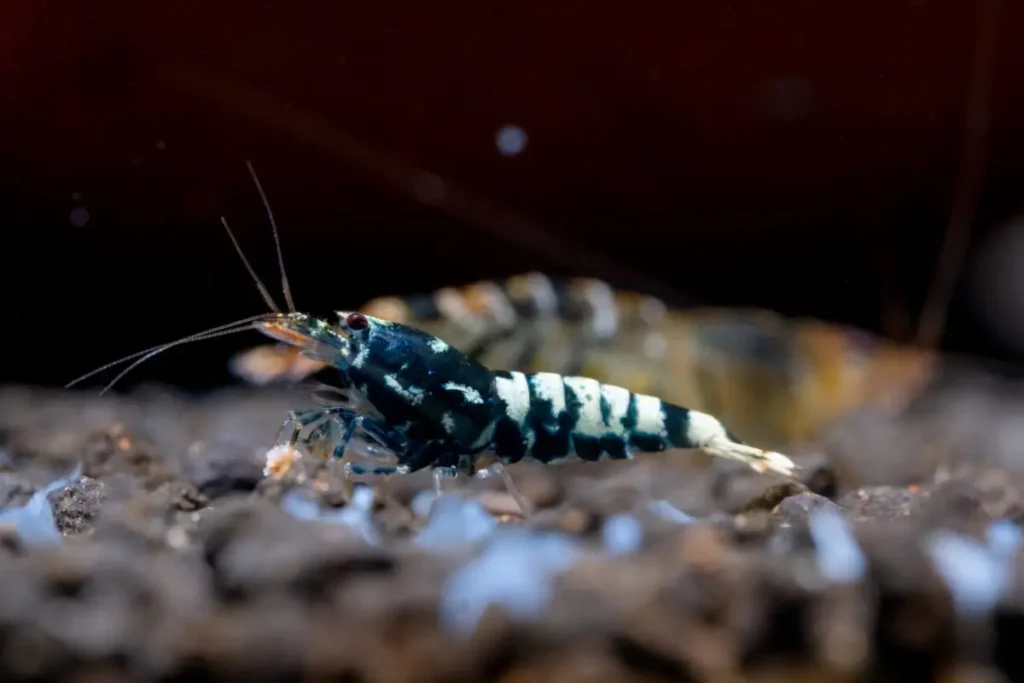
Osmoregulation
Sodium is vital for osmoregulation, the process by which shrimp balance the internal concentration of salts and water relative to their environment. This is especially important for maintaining fluid balance and ensuring the stability of internal cellular processes in varying water conditions.
Nerve Function
Sodium ions are essential for the transmission of nerve impulses. These ions help generate and propagate nerve signals, crucial for shrimp to respond to environmental stimuli and coordinate their muscular activities effectively.
Ion Balance
With other electrolytes like potassium and chloride, sodium helps maintain the overall ionic balance within the shrimp’s body. This balance is essential for various biochemical and physiological processes, including muscle function and heart rate.
Metabolic Functions
Sodium is involved in various metabolic processes. It interacts with other minerals and vitamins to facilitate the absorption and transport of nutrients across cell membranes.
Overall Health and Growth
Proper sodium intake is associated with improved health and growth rates in shrimp. It supports various physiological functions contributing to shrimp’s robustness and vitality, helping them grow efficiently and remain healthy.
Given its importance, sodium levels must be carefully managed in shrimp farming and aquarium settings to prevent deficiencies and excesses, which can lead to health issues. Ensuring a balanced diet and maintaining optimal water quality are critical strategies for managing sodium and other crucial electrolytes in shrimp habitats.
5. Zinc Benefits in the Crustacean Diet
Zinc is an essential mineral crucial to crustaceans’ overall health and well-being. Its benefits extend beyond critical nutrition, contributing to various physiological processes supporting their growth and immune function.
Enzyme Activation and Protein Synthesis with Zinc
Zinc activates numerous enzymes essential for crustacean metabolism and overall physiological functions. These enzymes are crucial in various processes, including protein synthesis, and are vital for growth, tissue repair, and reproduction.
Zinc’s presence facilitates the synthesis of specific proteins needed for crustacean development and overall health. It helps ensure the necessary proteins are produced efficiently and adequately, supporting their growth and well-being.
Growth Hormone Formation and Immune Support
Zinc also plays a critical role in crustacean growth hormone formation. It regulates and synthesizes growth hormone, which promotes growth and development by stimulating cellular replication and differentiation.
In addition to its role in growth, zinc supports the crustacean’s immune system, playing a vital role in immune cell function and overall immune response. It aids in producing and activating immune cells, enhancing their ability to fight off pathogens and infections.
Zinc contributes significantly to crustaceans’ overall health and well-being by promoting proper enzyme activation, protein synthesis, growth hormone formation, and immune support. Incorporating zinc into their diet ensures optimal growth, development, and defence against diseases and infections.
| Benefits of Zinc in Crustacean Diet |
|---|
| Activation of essential enzymes |
| Facilitation of protein synthesis |
| Promotion of growth hormone formation |
| Support for immune function |
6. Essential Trace Elements: Manganese and Boron in Invertebrate Care
Attention to the essential trace elements is crucial for the well-being of invertebrates in your aquarium. Two of these elements, manganese and boron, play significant roles in ensuring the optimal health and functioning of crustaceans, snails, and other invertebrates.
Manganese: A Cofactor in Diverse Enzymatic Reactions
Manganese is an essential mineral that is a cofactor in numerous enzymatic reactions. These reactions involve critical processes within invertebrates, including protein and carbohydrate metabolism and antioxidant defence mechanisms.
Manganese also plays a crucial role in synthesising chitin, a significant component of invertebrate exoskeletons. This mineral is necessary for forming and maintaining a strong and healthy exoskeleton, directly impacting invertebrates’ overall well-being and moulting process.
The Role of Boron in Protein Synthesis
Boron is another vital trace element in invertebrate care, particularly in protein synthesis. Protein is essential for invertebrates’ growth, repair, and reproduction, and boron is involved in activating and utilising amino acids, the building blocks of proteins.
In addition to its role in protein synthesis, boron also influences the integrity and structure of cell walls in plants, which can indirectly benefit invertebrates that consume plant matter as part of their diet. By ensuring proper cell structure, boron contributes to invertebrates’ overall health and vitality.
Incorporate manganese and boron into invertebrates’ diets to provide optimal care. These trace elements support vital processes such as moulting, shell formation, protein synthesis, and overall physiological functions.
7. Iron Improvements: Oxygen transport and energy metabolism
Iron is a crucial mineral in the nutrition of shrimp, as well as many other living organisms, due to its essential roles in various physiological processes:
Oxygen Transport
Iron is a critical component of hemocyanin, a copper-containing oxygen-transport protein in the blood of many crustaceans, similar to the role of hemoglobin in vertebrates. While hemocyanin uses copper for oxygen binding, iron is critical in overall metabolic processes that facilitate oxygen transport and utilization.
Enzymatic Functions
Iron is involved in the function of various enzymes and proteins critical for cellular energy production and metabolism. It acts as a cofactor for enzymes in the electron transport chain, which is fundamental to cellular respiration.
Immune Function
Iron is vital for the proper functioning of the immune system. It helps in the proliferation and maturation of immune cells, particularly those involved in the defence against pathogens and infection.
Growth and Development
Adequate iron levels are necessary for shrimp’s growth and development, influencing their size and reproductive capabilities. Iron deficiency can lead to slowed growth rates, reduced stamina, and poorer health.
Synthesis of Biological Compounds
Iron is necessary for synthesising various essential biological compounds, including certain hormones and lipids, which are crucial for the normal functioning of bodily systems.
Several studies have examined the iron content in shrimp and its importance for their physiological functions:
- Iron Content Measurement: Research has quantified the total iron concentrations in shrimp, showing a range from modest to significant levels, underscoring iron’s importance in the shrimp diet.
- Nutritional Importance: Iron is recognized for its crucial role in oxygen transportation in shrimp, similar to its function in higher vertebrates. This is particularly important for shrimp’s energy metabolism and overall health.
- Supplementation Studies: Some studies have explored the effects of iron supplementation in shrimp diets, indicating ongoing interest and research in optimizing iron levels for improved health and growth outcomes in shrimp aquaculture.
8. Phosphorus Ignitors: Energy storage and shell structure
Phosphorus is a vital mineral in shrimp nutrition, playing several crucial roles in their physiological functions and overall health. As a component of nucleic acids, phosphorus is fundamental to the genetic building blocks of life, DNA and RNA, meaning it is essential for the growth and reproduction of shrimp.
Additionally, phosphorus contributes to adenosine triphosphate (ATP) formation, which provides energy for many cellular processes in shrimp. This energy is necessary for muscular movements, including swimming and feeding, making phosphorus indispensable for shrimp’s daily activities and survival.
Moreover, phosphorus is involved in the structural integrity of shrimp exoskeletons. It works with calcium to strengthen the exoskeleton, which is crucial during moulting. Shrimp shed their old shell to grow during moulting, forming a new, stronger exoskeleton.
Adequate phosphorus in the diet ensures that shrimp can regenerate their protective and supportive exoskeleton effectively and maintain proper growth rates. A phosphorus deficiency can lead to poor shell quality, slower growth rates, and increased susceptibility to diseases, highlighting its importance in maintaining a healthy shrimp population in natural habitats or aquaculture environments.
9. Selenium: Unseen Warrior
Selenium is a vital micronutrient in shrimp nutrition due to its significant role in enhancing immune function and acting as a powerful antioxidant within biological systems. For shrimp, selenium is essential in helping to prevent cellular damage caused by oxidative stress.
This oxidative stress can result from environmental factors such as pollution, varying water quality conditions, or physiological stress due to rapid growth phases or reproduction cycles.
Selenium is a key component of various selenoproteins, including important antioxidant enzymes like glutathione peroxidase, in shrimp’s biochemical pathways.
These enzymes help reduce peroxides, harmful oxidizing agents that can damage cell membranes and other molecular structures. Selenium contributes to maintaining the shrimp’s cellular integrity and overall health by mitigating these oxidative threats.
Moreover, adequate selenium in shrimp diets has been linked to improved growth rates and survival outcomes. It aids in enhancing the immune responses, making shrimp less susceptible to diseases and infections, which are common challenges in aquaculture operations.
Thus, including selenium in the diet, whether through natural dietary sources or supplemented feeds, is crucial for maintaining robust health and optimizing the productivity of shrimp farming practices.
10. Iodine Supplements: Thyroid function and developmental processes
Iodine plays a critical role in shrimp’s nutrition and physiological health, and its importance is underscored by several vital functions it performs within their systems.
Primarily, iodine is essential for adequately functioning the thyroid gland, which produces hormones crucial for regulating metabolism, growth, and development in shrimp, similar to its function in vertebrates.
These thyroid hormones help regulate the process of moulting, which is vital for growth. Molting is the shedding of the exoskeleton, allowing the shrimp to grow and develop a new, larger exoskeleton. An iodine deficiency can lead to disrupted moulting cycles, severely affecting shrimp’s growth rates, health, and survival. This is particularly significant in aquaculture, where optimal growth rates are crucial for economic viability.
Moreover, iodine enhances shrimp’s overall immune competence. It contributes to the antioxidant defence systems, helping to protect cells from oxidative stress and supporting the immune response against pathogens.
This aspect of iodine nutrition helps maintain the overall health and robustness of shrimp populations, especially in densely stocked farming environments where disease outbreaks can be devastating.
Therefore, ensuring adequate iodine intake through diet or water supplementation is essential for maintaining shrimp’s health, growth, and metabolic efficiency.
This makes iodine an indispensable mineral in shrimp nutrition and aquaculture management practices.
The Vital Vitamins: From D to A for Healthy Crustacean Growth
Vitamins such as shrimp, crayfish, and snails are crucial in crustaceans’ growth and overall health. These essential nutrients are necessary for various physiological processes and can contribute to the prevention of vitamin deficiencies that may negatively impact crustacean well-being. Understanding the importance of vitamins in crustacean care is critical to providing them with a balanced and nutritious diet.
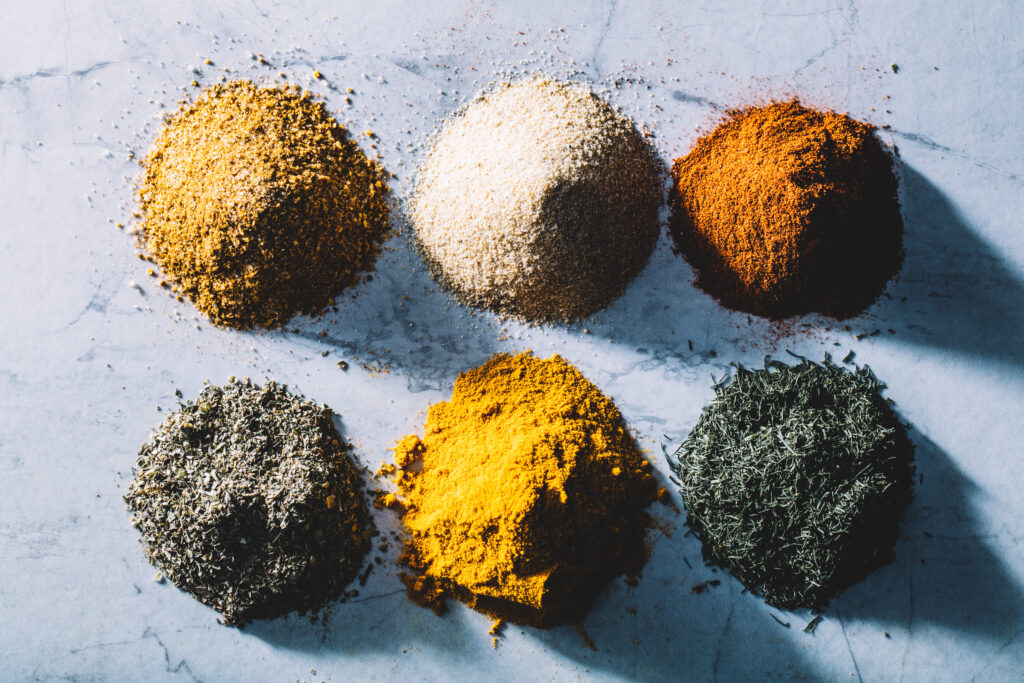
One vital vitamin for crustaceans is Vitamin D, which helps regulate calcium and phosphorus levels in the body. It supports the absorption and utilization of these minerals, promoting healthy growth and shell formation. Vitamin D also aids moulting, ensuring smooth transitions between exoskeletons. Without sufficient Vitamin D, crustaceans may experience growth abnormalities and weakened shells.
Vitamin A is another essential vitamin for crustaceans. It is crucial for maintaining proper vision, promoting reproductive health, and supporting immune function. Vitamin A also plays a role in the development of the nervous system and can contribute to the overall vitality of crustaceans. Without enough Vitamin A, crustaceans may be more prone to infection and have compromised reproductive capabilities.
To ensure crustaceans receive adequate vitamins, they must have a varied and nutritious diet. Commercially available crustacean food often contains vitamin supplements, but offering fresh or frozen foods that naturally contain these essential nutrients is also beneficial. Additionally, proper aquarium maintenance and water quality are critical for crustaceans’ optimal absorption and utilization of vitamins.
By understanding the role of vitamins in crustacean growth and health, aquarists can take steps to prevent vitamin deficiencies and promote the well-being of their aquatic pets. Providing a balanced diet rich in essential vitamins like Vitamin D and Vitamin A contributes to the overall vitality and longevity of crustaceans in the aquarium.
Carotenoids and Crustaceans: Astaxanthin’s Impact on Color and Health
Astaxanthin as a Natural Pigment and Health Booster
One of the fascinating aspects of crustaceans is their vibrant colours. The vivid shades that adorn shrimp, crayfish, and other crustaceans are not just for aesthetic appeal; they also serve as visual indicators of their health and overall well-being. A key player in the stunning pigmentation of crustaceans is astaxanthin, a potent carotenoid.
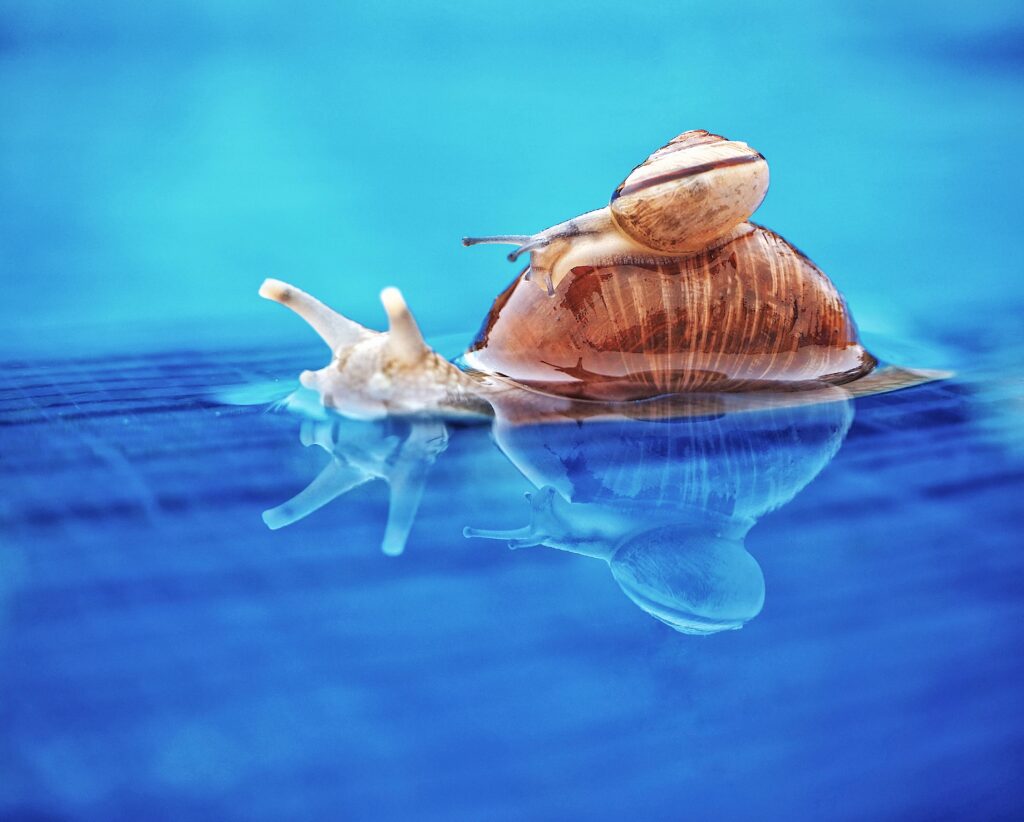
Astaxanthin is a natural pigment, giving crustaceans their vibrant red, orange, and pink hues. This carotenoid is synthesized by certain algae and converted into its active form as crustaceans consume it through their diet or by consuming organisms that have already accumulated astaxanthin.
Aside from its role in colouration, astaxanthin also offers numerous health benefits for crustaceans. Its antioxidant properties help neutralize harmful free radicals and protect cellular structures from oxidative damage. This is particularly important for crustaceans living in aquarium environments, where oxidative stress may arise from water quality issues or exposure to pollutants.
In addition to its antioxidant properties, astaxanthin has been shown to enhance the immune systems of crustaceans. A robust immune system is vital for these aquatic creatures to fend off pathogens and prevent infections. By bolstering immune function, astaxanthin supports crustaceans’ overall health and longevity.
Encouraging Fertility and Strengthening Immune Systems
Another intriguing benefit of astaxanthin is its potential to promote fertility in crustaceans. Studies have suggested that astaxanthin supplementation can enhance reproductive performance and increase the number and quality of offspring produced by shrimp and crayfish.
Furthermore, astaxanthin has been found to play a role in the growth and development of snails. This carotenoid has been shown to support shell formation and contribute to overall snail health and growth.
With dual roles as a natural pigment and health booster, astaxanthin is valuable in caring for crustaceans. Aquarists can enhance the colour, health, fertility, and immune support of their beloved shrimp, crayfish, and snails by providing the necessary astaxanthin through balanced diets or supplementation.
Snail Shell Health: The Crucial Role of Calcium Carbonate
The integrity and strength of snail shells are vital for their health. Snails rely on their shells for protection, support, and overall well-being, so ensuring their shells’ proper formation and growth is essential for their overall health and longevity.
One key component responsible for developing and maintaining snail shells is calcium carbonate. Calcium is essential in shell formation, providing the necessary building blocks for the snail’s protective outer layer. It also helps maintain shell integrity, preventing cracks and abnormalities that could leave snails vulnerable to injury and disease.
Snails rely on various sources to meet their calcium needs. In their natural habitat, snails, such as mineral-rich rocks and vegetation, obtain calcium from their environment. However, in a controlled aquarium environment, providing them with calcium-rich foods and supplements is essential to ensure they receive adequate amounts of this vital mineral.
Mineral-fortified food formulated explicitly for snails can be an excellent source of calcium carbonate for these invertebrates. These specialized diets are designed to meet the specific nutritional needs of snails, including the necessary calcium for shell health.
Magnesium is another mineral that plays a role in snail shell health. Magnesium contributes to the shell’s structural integrity and helps maintain its strength and durability.
Ensuring snails receive a balanced diet with adequate calcium and magnesium is vital to support healthy shell formation and growth. Providing a variety of mineral-rich foods, such as algae and calcium-enriched pellets, can help fulfil their nutritional requirements and promote optimal shell health.
By prioritizing the snail’s shell health through proper nutrition and supplementation, aquarists can help ensure that these fascinating creatures thrive in their aquatic environment and enjoy long, healthy lives.
Integrating Essential Minerals into Your Tank’s Diet Plan
Ensuring a well-balanced and nutrient-rich diet is crucial for the health and well-being of your aquatic pets. Incorporating the right minerals into their diet can support their overall health, promote proper growth and development, and enhance their immune systems.
One essential aspect to consider is the water quality in your aquarium. Water quality plays a significant role in the availability of minerals for your shrimp, crayfish, and snails. Maintaining a balanced aquarium environment with optimal mineral levels is essential to support their nutritional needs.
Regular mineral testing ensures that your aquarium provides the necessary minerals. Mineral testing allows you to monitor the levels of essential minerals and identify any deficiencies or imbalances that may affect the health of your crustaceans or snails. By understanding the mineral composition of your water, you can make informed decisions about supplementing your diet with appropriate aquatic supplements.
Supplemental nutrients such as aquarium minerals can be added to their diet to provide the necessary trace elements and minerals they may not be getting from their food alone. These supplements are specifically formulated to support the health and well-being of aquatic species, ensuring that they receive the supplemental nutrients they need for optimal growth and vitality.
When choosing aquatic supplements, it’s essential to select ones that are specifically designed for the needs of your shrimp, crayfish, or snails. Look for supplements that contain a balanced blend of important minerals, including calcium, magnesium, potassium, and other essential trace elements.
Integrating essential minerals into your tank’s diet plan can help promote your aquatic pets’ overall health and well-being. Remember to prioritize water quality, conduct regular mineral testing, and provide supplemental nutrients to ensure your shrimp, crayfish, and snails receive the balanced nutrition they require for a thriving aquarium environment.
Conclusion
Ensuring the health and well-being of your aquarium crustaceans requires careful attention to their mineral needs. You can support their physiological processes and overall aquatic health by providing essential minerals in the right quantities.
Regular monitoring of mineral levels and implementing supplemental nutrients when necessary is crucial in preventing insufficiencies or mineral deficiencies. Maintaining optimal mineral levels is paramount in optimizing the development and growth of your shrimp, crayfish, and snails.
Remember that each species has unique requirements. Please pay attention to their specific needs and adjust their diets accordingly. A balanced aquarium with appropriate mineral supplementation can lead to healthier crustaceans, improved shell integrity, and better reproductive success. Incorporating essential minerals into your tank’s diet plan empowers you to create a thriving aquatic environment for your beloved crustaceans.

